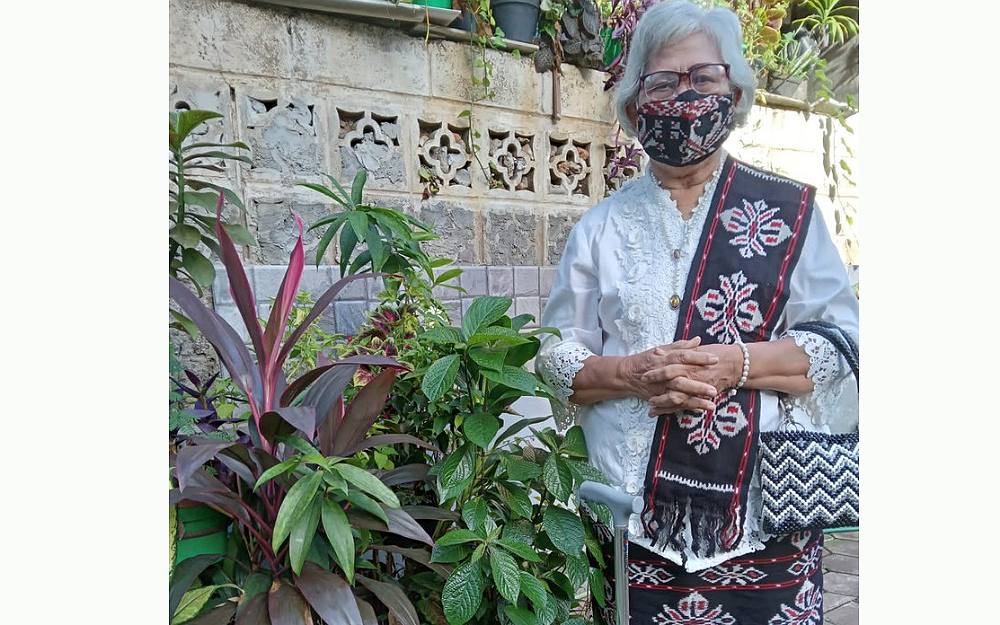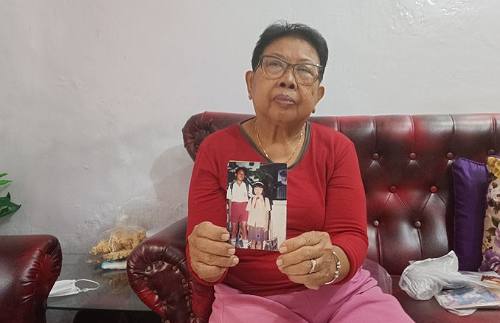Ahmad Syamsudin/Jakarta

Maria Sanu is not interested in the president’s apology for the state’s complicity in anti-ethnic Chinese riots in Jakarta during which her 16-year-old son Stevanus was killed in 1998.
She wants the perpetrators held accountable because, she says, such official expressions of regret are “meaningless.”
“Regret? What’s the point of regrets? The damage has been done,” Sanu, 75, told BenarNews when asked to respond to President Joko “Jokowi” Widodo’s statement of deep regret last week over 12 past incidents of gross human rights abuses by state security forces.
“They promised to solve the cases but where’s the proof? It was all talk. All we get are promises, and more promises.”
She could not hold back tears as she recounted the events of May 1998.
“Every time I talk about it I cry,” she said.
“I gave birth to him, raised him and educated him. But they burned him alive. It is painful beyond words,” she said.
The 1998 riots took place at the height of the crippling Asian financial crisis and amid widespread discontent against Suharto’s 32-year iron-fisted and corrupt rule.
The rioting followed the shooting death of four students during a large anti-Suharto rally at Trisakti University in Jakarta on May 12.
Widespread arson, accompanied by looting, resulted in the deaths of some 1,200 people, mostly people trapped in burning shopping malls.
The riots took place in Jakarta’s Chinatown and spread to other districts in the nation’s capital. Rioting also broke out in other major Indonesian cities, including Surabaya and Medan.
The police and military were accused of being slow to respond to the unrest, and of not doing enough to protect properties mostly belonging to members of the ethnic Chinese minority, who were often the targets of civil unrest because they were considered as disproportionately wealthy and influential.
Suharto resigned on May 21 that year after students occupied the parliament building.
A fact-finding team set up by the government of the then-President Bacharuddin Jusuf Habibie, who replaced Suharto, found that the masses were provoked into violence by people who appeared to be well-trained.
During his apology on Jan. 11, Jokowi listed 12 gross rights violations that occurred between the mid-1960s and 2003, and promised compensation for the abuses.
“With a clear mind and a sincere heart, I, as head of state of the Republic of Indonesia, acknowledge that serious human rights violations did occur in various incidents. And, I deeply regret these gross human rights violations,” he said.
“I and the government are working really hard so that gross human rights violations will not happen again in Indonesia in the future.”
Ruminah, the mother of a teenager who was killed in an arson attack on a mall in 1998, said she was not interested in compensation. She wants justice.
“I’m not asking for a house, for example. What I want is an explanation why so many people were burned to death, and no one did anything about it,” Ruminah, 66, told BenarNews at her cramped home in a poor East Jakarta neighborhood.
“I’m relieved that the government finally acknowledged it. But there must be justice for the victims.”
Ruminah said her son Gunawan, then 17, rushed to the Yogya Klender shopping center, where she owned a hair salon, when he heard that it was set ablaze by a mob during the apparently coordinated campaign of arson attacks and rape in Jakarta in May 1998.
He was never seen again.
More than 100 people died at the mall, most of their bodies charred beyond recognition. Some fell to their deaths to escape the flames.
“I cried for days until I lost my voice. I raised him to be a good boy, so I insisted that he be buried properly,” she said.
“My husband claimed one body bag and buried it just to make me stop crying. It wasn’t our son.”
She showed faded photos of Gunawan, one showing him wearing his junior high school uniform and another showing a younger him wearing a red and white elementary school outfit.

‘Trauma stays with me’
The Association of Families of Missing Persons (IKOHI) hailed the government’s acknowledgement and pledge for compensation as “historic.”
It “is the fruit of the long struggle of the victims and their families,” said association chairwoman Wanmayetti, who goes by a single name. “This is a good first step towards a comprehensive resolution to the gross human rights violations.”
On Monday, the coordinating minister for political, legal and security affairs, Mohammad Mahfud MD, said Jokowi would personally meet with victims of rights violations and their families.
“To show the public that we are serious, in the near future the president will visit several regions, for example Aceh,” Mahfud told reporters.
Aceh, a province at the northwestern end of Indonesia, was the scene of a bloody separatist conflict during which security forces were accused of atrocities including mass killings and torture, before a peace accord was signed in 2005.
People in Aceh welcomed the president’s acknowledgment that government troops committed gross rights abuses during counter-insurgency operations. But they also said that relatives of thousands killed back then deserve justice.
According to human rights groups, more than 15,000 people were killed during the separatist insurgency that ended when Jakarta and the Free Aceh Movement rebels signed the peace accord.
Still, for parents like Ruminah and Sanu, the tragedy will remain vivid in their memories, they said.
“People say after 25 years I should have forgotten it, but no. The trauma stays with me,” Ruminah said.
“I don’t even want to set foot in a mall.”
Copyright ©2015-2022, BenarNews. Used with the permission of BenarNews.














